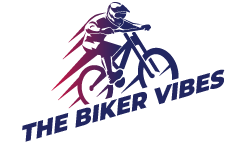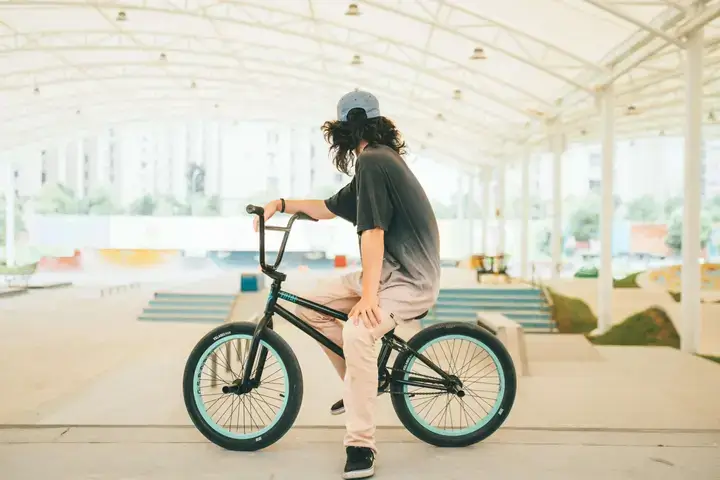The mean speed of a BMX bike indicates the usual rate at which a Bicycle Motocross bike moves during regular conditions for an average rider. The speed of a BMX bike can vary depending on several factors, including the rider’s skill level, ground, and the specific BMX bike being used. A skilled BMX rider typically reaches speeds of 20+ to 30 mph (32 to 48 kph) on flat, well-maintained surfaces
Introduction
In the kingdom of extreme thrills and heart-racing exploits, BMX cycling has surged in fame and garnered massive popularity. Riders often find themselves curious about the top speeds they can achieve on their BMX bikes. Whether you’re an experienced BMX aficionado or a novice, comprehending the factors impacting your bike’s speed enhances your riding experience significantly. In this comprehensive guide, we delve into the world of BMX biking and explore the training, skills, nutrition, and much more to help you maximize your BMX bike’s speed potential.
Importance of Speed in BMX Biking
Speed is not just an accessory in BMX biking; it’s a fundamental aspect that adds excitement and challenge to the ride. Whether you’re conquering ramps, racing against others, or executing jaw-dropping stunts, having control over your bike’s speed is crucial.
Factors Affecting BMX Bike Speed
Certainly! Here’s an exploration of the factors affecting BMX bike speed, organized into different categories:
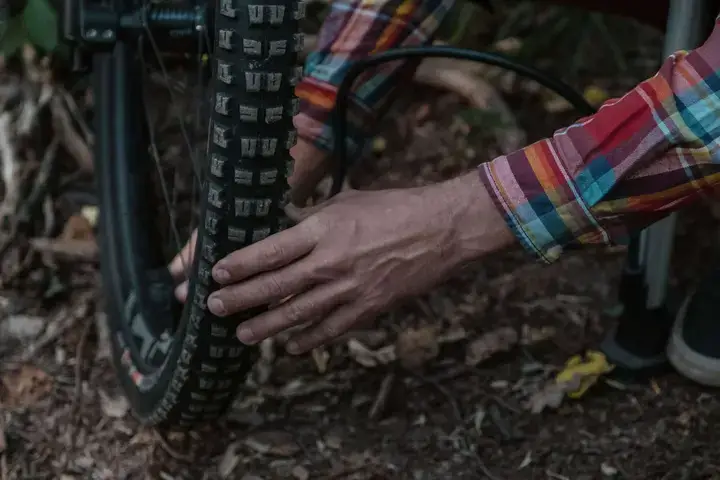
Rider Skill and Technique:
- Experience: A rider’s experience level can significantly impact speed. Experienced riders tend to have better control, balance, and are more efficient in their movements.
- Pedaling Technique: Efficient pedaling, including the ability to generate power through the entire pedal stroke, contributes to higher speeds.
- Body Positioning: Proper body positioning, such as leaning into turns and maintaining a low center of gravity, improves aerodynamics and overall control.
Gear Ratio and Drivetrain Efficiency:
- Experience: A rider’s experience level can significantly impact speed. Experienced riders tend to have better control, balance, and are more efficient in their movements.
- Pedaling Technique: Efficient pedaling, including the ability to generate power through the entire pedal stroke, contributes to higher speeds.
- Body Positioning: Proper body positioning, such as leaning into turns and maintaining a low center of gravity, improves aerodynamics and overall control.
Gear Ratio and Drivetrain Efficiency:
- Gear Ratios: The selection of gear ratios plays a crucial role in determining a BMX bike’s speed. Riders must choose ratios that suit their riding style and the terrain.
- Drivetrain Maintenance: Regular maintenance of the drivetrain, including the chain, cassette, and pedals, is essential for minimizing power loss and ensuring efficient power transfer.
Wheel Size and Tire Selection:
- Wheel Size: Larger wheels generally offer higher top speeds, while smaller wheels provide better acceleration. The choice depends on the rider’s preferences and the type of riding they do.
- Tire Selection: Tires with low rolling resistance are key for maximizing speed. Tread patterns and tire width also affect traction and speed on different surfaces.
- Tire Pressure: The tire pressure can significantly impact speed. Higher tire pressure can reduce rolling resistance, but too much pressure can lead to a harsher ride. Finding the right balance is key.
- Tire Tread: The type of tire tread can affect traction and, subsequently, speed. Slick or low-profile tires are often used for smoother surfaces to reduce rolling resistance.
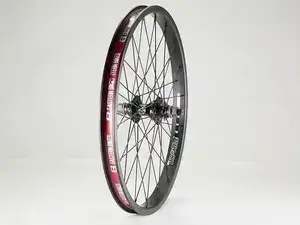
Track or Terrain:
- BMX Tracks: Designed for speed and jumps, BMX tracks offer a controlled environment for high-speed racing.
- Skateparks: Typically featuring ramps and obstacles, skateparks require a balance between speed and maneuverability.
- Dirt Jumps: Riding on natural dirt jumps demands adaptability due to uneven surfaces, affecting both speed and control.
Aerodynamics and Body Positioning:
- Aerodynamics: Streamlined body positioning, such as tucking during jumps and minimizing air resistance, enhances overall speed.
- Clothing Choices: Tight-fitting clothing reduces drag and can contribute to improved aerodynamics.
Bearing Quality and Frame Geometry:
- Bearing Quality: The quality and condition of the bike’s bearings (in hubs, bottom bracket, and headset) can affect the overall efficiency of the bike and impact speed.
- Frame Geometry: The design of the BMX frame, including the head tube angle, top tube length, and chain stay length, can influence stability, control, and aerodynamics, all of which contribute to speed.
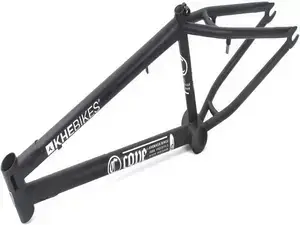
Bike Weight and Material:
- Bike Weight: A lighter BMX bike allows for quicker acceleration and easier maneuverability.
- Material: The material of the bike frame and components can impact weight, stiffness, and overall performance.
Brake Condition and Suspension System:
- Suspension: While traditional BMX bikes lack suspension, some riders opt for BMX bikes with front suspension for better shock absorption, especially in dirt jumping.
- Brake Condition: The condition of the brakes can affect the rider’s confidence in controlling speed. Well-maintained brakes ensure the rider can manage their speed effectively.
Environmental Factors:
- Weather Conditions: Wind, rain, and temperature can affect both the rider and the bike’s performance.
- Surface Conditions: Wet or loose surfaces can impact traction and speed.
How Fast Can a BMX Bike Go with Enhanced Strength?
Full-Body Power Workouts
Embark on a strength training plan that targets the entire body. Engage in compound exercises like squats, deadlifts, and bench presses to build overall power, essential for propelling a BMX bike at top speeds.
Explosive Leg Training
The legs are the powerhouse for BMX riders. Incorporate explosive leg exercises like box jumps, leg presses, and lunges to enhance the force generated during pedal strokes, resulting in increased speed on the track.
Core Stability for Control
A stable core is crucial for maintaining control at high speeds. Integrate core-strengthening exercises such as planks, Russian twists, and bicycle crunches into your routine to optimize stability during fast-paced BMX maneuvers.
Navigating Speed Peaks with Interval Training for BMX
Sprint Intervals
Develop a training program that alternates between short, intense sprints and periods of moderate recovery. This interval approach simulates the unpredictable bursts of speed required in BMX racing, enhancing both speed and endurance.
Hill Climbing Techniques
Include hill sprints in your interval training regimen to mimic the uphill challenges encountered in BMX tracks. Uphill sprints build leg strength and cardiovascular endurance, translating to improved speed on various terrains.
Track Simulation Drills
Replicate BMX race scenarios with track simulation drills. Design intervals that mimic the twists, turns, and obstacles found on BMX tracks, allowing riders to adapt to the unique demands of their sport.
Essential Skills for BMX Riding
Gaining Speed with Precision Techniques. Here are some
Controlled Bunny Hops
Mastering controlled bunny hops is essential for navigating obstacles and maintaining momentum. Practice lifting both wheels off the ground simultaneously, ensuring a smooth and efficient transfer of energy that propels you forward.
Pump Tracks for Momentum
Explore the world of pump tracks beyond the racetrack. Pumping through rollers and berms on a pump track not only hones your skills but also teaches you to use your body to maintain momentum, a crucial aspect of achieving top speeds in any riding scenario.
Bunny Hop Variations
Experiment with different bunny hop variations. From tuck no-handers to bar spins, incorporating these tricks into your riding repertoire not only adds flair but also contributes to the development of precise bunny hop techniques that enhance speed.
Plyometrics Training for BMX Success
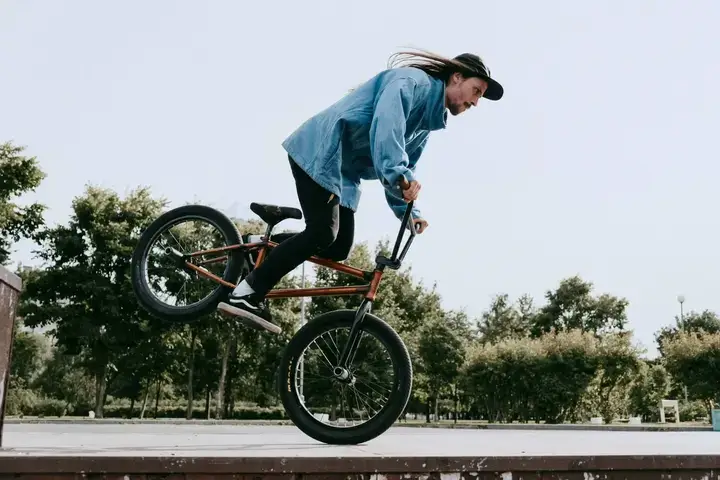
Jump Training
Achieving airtime is a defining element of BMX biking. Incorporate jump training with exercises like box jumps, tuck jumps, and depth jumps to enhance vertical leap, crucial for conquering ramps and obstacles with speed and style.
Quick Acceleration Drills
Plyometric exercises focusing on rapid acceleration contribute to faster starts and quick bursts of speed. Include drills like squat jumps, bounding, and agility ladder drills to sharpen acceleration capabilities.
Body Control Techniques
Fine-tune body control with plyometric drills emphasizing balance and coordination. Exercises like single-leg hops, lateral bounds, and stability ball exercises enhance control during high-speed maneuvers, ensuring a smooth and controlled ride.
Nutrition for BMX Speed
Optimizing Performance with Proper Nutrition. Here are some
Adequate Caloric Intake
BMX riding demands energy. Ensure a well-balanced diet that provides the necessary calories to fuel both training sessions and competitions. Lean proteins, complex carbohydrates, and healthy fats form the foundation of a BMX rider’s nutritional plan.
Hydration for Performance
Stay hydrated to maintain peak performance. Dehydration can impair speed and endurance. Consume an adequate amount of water and electrolytes to prevent fatigue and optimize overall biking performance.
Pre- and Post-Workout Nutrition
Strategically plan pre-and post-workout meals to support energy levels and recovery. Carbohydrate-rich snacks before riding and protein-packed meals afterward aid in muscle repair and replenish glycogen stores, essential for sustained speed.
Essential Elements for BMX Success
Quality Sleep
Prioritize quality sleep to allow the body to recover and adapt to training stress. Aim for 7-9 hours of sleep per night to optimize muscle repair and enhance overall performance on the BMX bike.
Active Recovery Strategies
Incorporate active recovery days into your training routine. Low-intensity activities like cycling, yoga, or swimming promote blood flow, reducing muscle soreness and contributing to faster recovery.
Listen to Your Body
Pay attention to signals of fatigue or overtraining. Rest when needed, and don’t hesitate to adjust your training intensity. Avoiding burnout is crucial for long-term success in BMX.
How to Boost Speed from the Start on BMX Bike
Starting Right here are some Gate Strategies for BMX Riding:
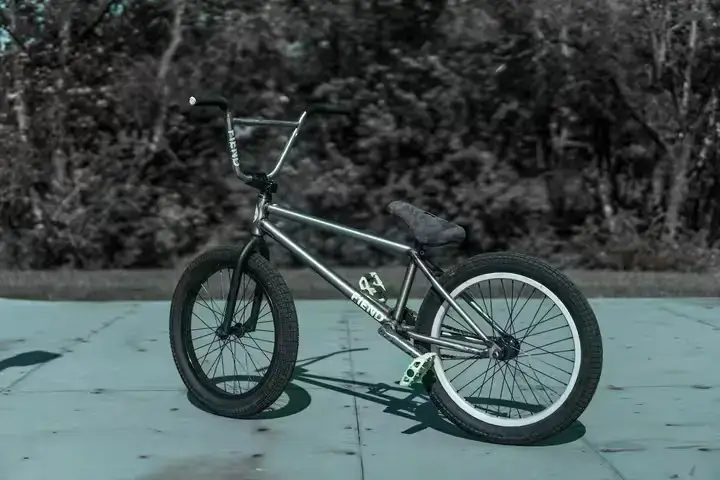
Controlled Launch
Perfecting gate strategies goes beyond racing. For everyday BMX riders, focus on a controlled launch from the starting gate. This ensures a swift and powerful start to any ride, whether it’s on the track or through your local trails.
Efficient Pedaling
Emphasize efficient pedaling techniques to propel yourself forward with each stroke. Consistency in pedal strokes, combined with proper body positioning, sets the foundation for achieving and maintaining top speeds.
Balancing Act
Maintain a balanced posture during the start. Proper weight distribution on the bike allows for optimal acceleration without compromising control, making it easier to reach top speeds in various riding environments.
Cornering Techniques for BMX Bike Speed
Flowing Through Turns
Apply advanced cornering techniques to maintain speed through twists and turns. The ability to flow seamlessly through corners enhances the overall riding experience, whether you’re on a designated BMX track or exploring natural terrain.
Dynamic Weight Shifts
Experiment with dynamic weight shifts during turns. Shifting your body weight effectively allows for sharper turns while preserving momentum. This skill proves invaluable for achieving top speeds on winding trails or urban landscapes.
Utilizing Obstacles
Incorporate turns around obstacles, such as ramps or natural features, into your riding routine. Learning to navigate turns in varied environments enhances your adaptability and speed, making every ride an exhilarating experience.
Mental Focus and Riding Tactics
Zen Riding
Embrace a Zen mindset while riding. Focus on the present moment, allowing your instincts and skills to guide you. This mental approach not only enhances the joy of riding but also contributes to a smoother, more controlled experience at higher speeds.
Scanning the Path
Develop a habit of scanning the path ahead. Whether you’re navigating a trail or cruising through an urban setting, maintaining awareness of the terrain allows for proactive adjustments, ensuring a continuous and swift ride.
Tactical Riding Decisions
Apply tactical riding decisions to non-competitive scenarios. Choose lines that optimize speed, anticipate obstacles, and use your surroundings strategically. These decisions, combined with mental focus, elevate your riding experience to new, exhilarating heights.
Safety Considerations
Importance of Protective Gear
In the pursuit of exhilarating speed, prioritizing safety stands as an unwavering commitment. Wearing appropriate protective gear, including helmets, knee pads, and elbow pads, is crucial to prevent injuries in the event of falls or accidents.
Risks Associated with High Speeds
Riding at high speeds comes with inherent risks. Understanding and acknowledging these risks is essential for riders looking to push their limits while maintaining a level of caution to avoid accidents.
Training for Control at High Speeds
Mastering control at high speeds requires practice and training. Riders should focus on developing skills that enhance their ability to navigate at fast speeds, ensuring a safe and enjoyable BMX experience.
Summary
In Summary, the limits of BMX speed are not fixed but ever-expanding, driven by the passion of riders, the advancements of science, and the creative engineering of tracks. Whether professionals pushing the envelope in competitions or recreational riders seeking the thrill of speed, the BMX community continues to defy limits and redefine what it means to ride at the edge of velocity.
Read More Articles
FAQs
1. Are BMX bikes only for racing?
No, BMX bikes are versatile and used for various purposes, including freestyle tricks and jumps.
2. What safety gear should I wear while BMX biking?
Always wear a helmet, gloves, knee and elbow pads, and appropriate footwear for protection.
3. Is a BMX bike suitable for daily commuting purposes?
While its possible, BMX bikes are primarily designed for short-distance, off-road riding and may not be the most comfortable choice for daily commuting.
4. How can I maintain my BMX bike for optimal speed?
Regularly clean and lubricate your bike’s components, check tire pressure, and ensure all parts are in good working condition.
5. Are there speed limits for BMX bikes on public roads?
Yes, in most areas, BMX bikes are subject to the same speed limits as other bicycles. Always adhere to local traffic laws and regulations for your safety and others.
